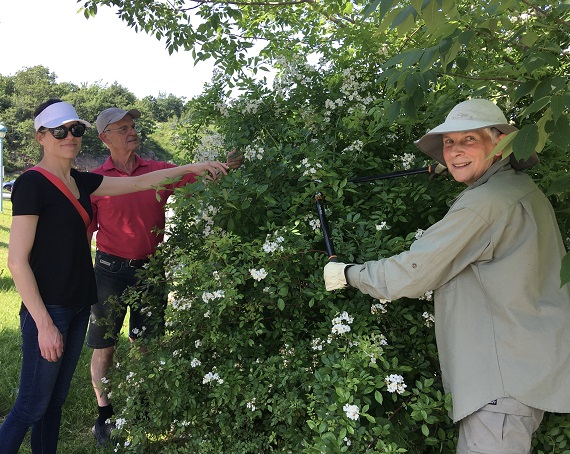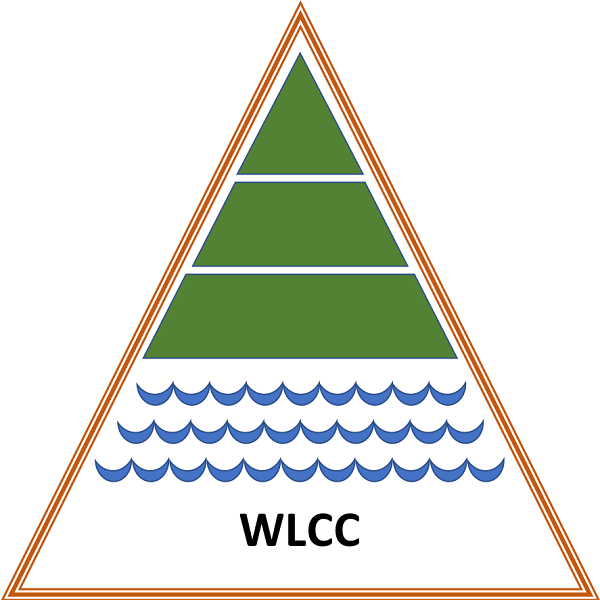Pervasive and Invasive Plants Around Williams Lake
By: Cathy Vaughan
Attacking prickly Multiflora Rose bushes and hacking out dense thickets of Japanese Knotweed takes a team of determined volunteers. Melanie Dobson, a member of the Williams Lake Conservation Company (WLCC) has been leading the campaign against these pervasive and invasive weeds along the Williams Lake Road and the Purcell’s Cove Road for many years. She is trying to stop the plants from spreading further into the Williams Lake watershed.
“Multiflora Rose is a non-native, highly invasive species. Left unchecked, this rose sends out long branches that can entangle and strangle trees. It forms dense thickets that can overrun garden plantings and outcompete native Nova Scotia plants. They can be seen around Williams Lake in gardens and areas close to the lake. They are quite dangerous as the branches have numerous sharp barbed thorns, like fish hooks,” states Dobson as she hacks at the thicket of thorny white flowers.
WLCC’s volunteer Andrea Lantz Powers notes that “We are also very concerned about Japanese Knotweed, an invasive plant that is taking over many areas in our watershed as well as in HRM. Unfortunately, numerous examples of this invasive can be seen around Halifax in gardens, along roads and close to Williams Lake.”
Knotweed is also a highly tenacious plant and very destructive of native habitats. It is capable of growing up to 10 cm per day, rapidly clogging water courses. Their deep root system makes them very difficult to eradicate. This invasive plant literally sucks the water out of many areas of the Williams Lake watershed.
The WLCC Weed-Team hauled out the tall, Knotweed bamboo-like stalks by the roots along the Williams Lake Road and areas next to the Shaw Wilderness Park on Purcell’s Cove Road. Leaving them at the side of the road to dry out in the heat will slow down or prevent roots and seeds from spreading further into the park’s native wild lands. The team stressed that no portion of the Japanese Knotweed should be put in your compost, green bin or sent to the landfill.

Robin Whyte, former president of WLCC and volunteer with the Weed-Team said “WLCC are active stewards of Williams Lake and its huge watershed since 1968. We have led many environmental projects that have protected this lake, from shore-line clean ups to working with government to safeguard the water quality of the lake and public access to it.”
WLCC’s website features the many environmental projects accomplished as protectors of Williams Lake as well as updates on current issues related to the lake. There is useful information on how to control and remove Multiflora Rose and Japanese Knotweed. Go to the Williams Lake Conservation Company website and click on “Maps & Guides – Invasive Species in Williams Lake Watershed.” [Invasive Species Factsheets]
From backyard gardeners to neighbourhood associations, weed-whacking together is the only real solution to eradicate these destructive invaders and protect the health and vitality of Williams Lake and its watershed.
